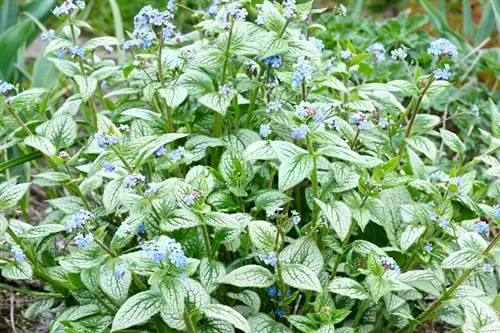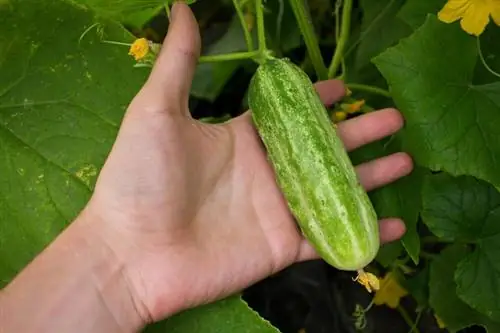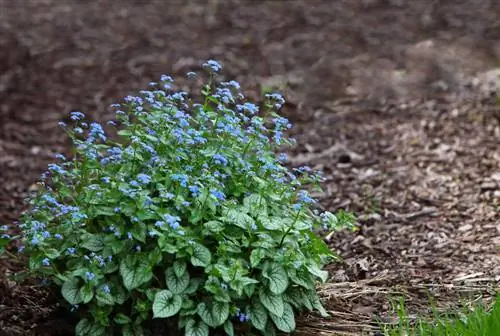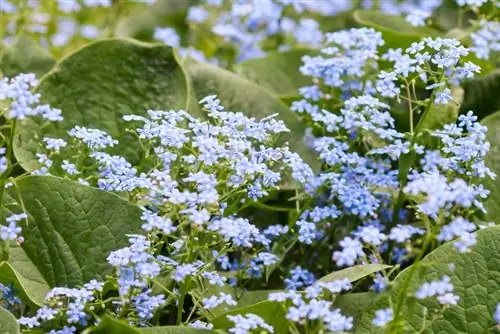- Author admin [email protected].
- Public 2023-12-16 16:46.
- Last modified 2025-01-23 11:20.
In its location, the Caucasus forget-me-not fascinates with its delicate blue-violet flowers, which almost seem to float on the delicate stems above the lush foliage. How to care for it to stay he althy and blooming for many years?
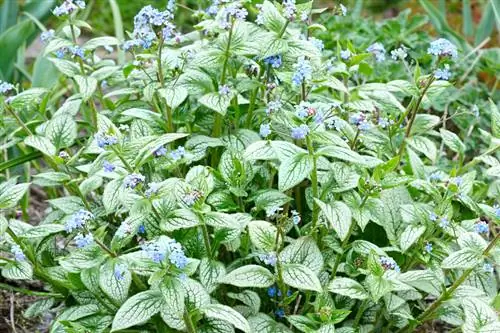
How do I properly care for my Caucasus forget-me-not?
To care for the Caucasus forget-me-not, you should cut it back after flowering and in autumn, water regularly, divide every 3 years, use nutrient-rich soil and fertilizer and cover it in winter in case of severe frost.
When should you cut back the plant?
After flowering, you should cut back the Caucasus forget-me-not. Pruning is useful to prevent the perennial from forming its seeds. The perennial is cut back for the second time of the year in autumn. You should start just above the ground. In the spring it will sprout again as usual.
Do you need to water the Caucasus forget-me-not?
The Caucasus forget-me-not can cope with drought at times. But if it has the choice, it would rather choose a refreshing rain shower than drought. Therefore, you should preferably water this plant regularly when there is no rain or when it is in a pot.
Attention:
- Use low-lime to lime-free water
- do not water the leaves
- pour directly onto the root area
- water every 1 to 2 days in the blazing sun in summer (if there is no rain)
When do you divide these perennials?
You can - but you don't have to - divide these perennials in the fall. This procedure is generally recommended every 3 years. This means that the Caucasus forget-me-not can be easily propagated. After division, the plant can also be transplanted.
How do you fertilize and which fertilizer is suitable?
This is important when fertilizing:
- needs nutrient-rich soil for abundant flowering
- incorporate compost before planting
- advisable, but not mandatory: fertilize from spring until the end of flowering
- Suitable fertilizers: compost, slow-release fertilizer, liquid fertilizer for perennials (€18.00 on Amazon)
What happens to the plant in winter?
The above-ground parts die off when there is frost. The roots, however, survive in the ground. Winter protection is not necessary. It is only recommended to cover the perennial - including varieties like 'Jack Frost' - with brushwood when there is severe frost.
Tip
While snails prefer to feed on other plants (this perennial has rough leaves), disease can occur due to gray mold or powdery mildew. But assuming good care, this only happens in exceptional cases.

